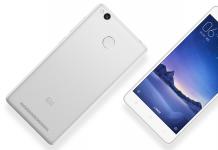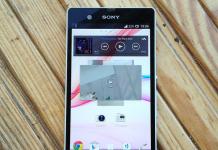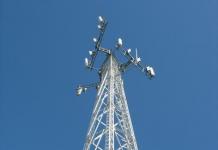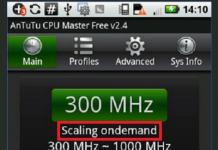Miracast technology was developed by Microsoft engineers. It is designed to transfer data from smartphones, tablets or computers to the display without the use of cables. In the new version of the OS, this function has become especially popular, so to get a clear picture on the screen and for freedom of movement, you need to know how to turn on Miracast Windows 10.
What it is?
The Miracast standard ensures interconnection between gadgets. They connect and transmit information to each other using a wireless network, without using an HDMI cable.
Advantages
- The main advantage is the absence of a rigid connection between the device and the display on which the image is broadcast using a cable. This connection method is modern and more convenient.
- This is a multi-platform technology that provides connection to devices running on different OSes, which distinguishes Miracast from similar technologies from Apple and Google.
- There is no loss of quality when transmitting data, so it fully replaces the HDMI cable.
Flaws
- Microsoft's streaming technology needs improvement because it only displays what's shown on the gadget's screen. Analogues have wider functionality.
- Frequent malfunctions make the function unpopular. Miracast is an open standard, so devices certified with this technology should work flawlessly with each other. But in practice there are failures.
Enabling on Windows 10
To create a connection between two gadgets using this technology, they must have a Wi-Fi adapter, and one of them must have Windows 8.1 or higher installed.
Good to know! Older TV models may not support Miracast. This problem can be solved by updating its firmware or purchasing a special adapter.
Disabling the receiver is done in the same section of the Settings application.
Select the receiver → Remove device → confirm the action.
Watch the video to see how to connect your smartphone to your TV using this feature.
Conclusion
In the near future, Miracast will become an excellent alternative to HDMI cables, because this method is much more convenient. The function is configured in the Windows 10 Settings application. In this case, the TV and computer must support this technology and have a Wi-Fi adapter.
Miracast is a wireless data transfer technology that is natively supported in the latest versions of Windows. Using it, you can broadcast images from your PC screen to other devices that also work with the “world”: SMART TVs, smartphones, tablets, external monitors, projectors, and so on. The beauty of using this technology is that it does not require connecting cables (HDMI, VGA or any other). The images are transmitted via Wi-Fi, and the only condition that the user must meet is to connect both devices ("transmitter" and "receiver") to the same access point.
Using Miracast on Windows 10
As we have already indicated above, “Mira” is built into “top ten” initially, so you are not required to download and install any additional programs. Simply open the Start menu, click on the Settings icon (the gear-shaped image in the lower left corner) and go to the Devices section. In this section you will see all the peripherals connected to the computer. We are required to link a new device to which the broadcast will be conducted. To do this, click on the "+" key next to "Add a Bluetooth or other device" and select "Wireless display or docking stations." After selecting the last item, Windows will automatically search for available devices connected to the same router as the computer. If there are any, the system will offer to start the “broadcast” by pressing the corresponding key.
Flaws
As you can see, starting data transfer using Miracast is quite simple. But the technology also has several disadvantages. For example, many users note a noticeable delay when broadcasting images, due to which you are unlikely to be able to play games. But watching movies or photos is fine.
Key Features
- supported in new versions of Windows by default;
- allows you to broadcast images to any compatible devices;
- establishes a wireless connection via Wi-Fi;
- does not require installation of additional programs;
- may exhibit fairly high picture latency.
Quite often, users connect a laptop or PC to other devices to display images, sound or video, such as a TV. There is no need to use cables for this, since the computer has a built-in Wi-Fi adapter with such capabilities. How to enable Miracast Windows 10 on a PC, laptop and enjoy the absence of cables can be found below.
What is Miracast
Miracast technology is one of the developments of Microsoft. It is designed to wirelessly transmit sound and images to other gadgets: computer monitors or TVs. The transfer can also be carried out to other devices capable of displaying a picture and playing sound.
The function is available for any type of gadget that has a built-in Wi-Fi adapter. The main thing is that it is possible to transmit and receive a wireless signal on both devices.
Advantages and disadvantages
Among the advantages of the technology, users note the following points:
- Ability to transmit images and sound without using cables.
- No need to transmit the signal through a router. Devices are synchronized using a different technology and create their own communication channel, which no one can interfere with.
- The image transmission speed is very high. Even when playing complex games you will not feel any lag or drop in FPS.
- The technology heavily compresses files. So even very voluminous documents will be transferred in a minimum amount of time.
- Supports 3D video broadcasts.
- Miracast is a very easy-to-use feature with a simple interface. Any user can enable and use it without additional instructions.
- This function is built into almost all modern devices, computers and laptops, televisions, for example, brands LG and Samsung.
Among the shortcomings, only one is noted, namely, the maximum quality of image or video transmission reaches only 1920x1200. This indicator does not make it possible to transmit video in UltraHD quality. But the average user will almost never encounter this problem, since devices that support such a high resolution are rare and are very expensive.
How to set up on laptop and PC
The function is present in most modern laptops and computers. The main thing is to figure out how to configure it and connect the PC to another screen.
Settings
There are many ways to customize Miracraft. The user can choose the most convenient option for him. Regardless of the method used, the result will be the same.
Keyboard shortcut
Enabling and configuring Miracast using a keyboard shortcut takes literally a few minutes. How to enable Miracast on a laptop with Windows 10 is shown in the instructions:

System parameters
To set up a wireless connection between two displays, you need to do the following:

Via WiDi
There are other technologies similar to Miracast. One of them is WIDI. It is also supported by modern TVs and screens. But unlike Miracast, it requires installing additional software “Intel Wireless Display” for its operation.
Widi is good because it can be used to connect to a laptop even a TV that does not have a Wi-Fi adapter. The connection in this case goes to the receiver, which in turn has a direct connection to the screen.
Problems during connection
Some problems may occur during connection. The most common one is this message "Unable to connect". Also, the connection can take a very long time and be unsuccessful.
In this case, the reasons may be the lack of the latest version of drivers on the adapter or the fact that it does not support such a function. The drivers can be updated, but in the second case nothing can be done.
Firewall problems
If the connection is not established or is reset at the very last moment, then the problem may be with the Firewall. You need to disconnect it and try to connect again. If everything went smoothly, it is recommended to switch the Firewall to interactive mode. In this case, it will ask for permission for suspicious connections.
Conclusion
Miracast is a convenient technology that is available to almost every user and is easy to use. Even an inexperienced user can figure out how to connect Miracast to Windows 10 on a PC.
Miracast is one of the technologies for wirelessly transmitting images and sound to a TV or monitor, easy to use and supported by many devices, including computers and laptops with Windows 10, if you have an appropriate Wi-Fi adapter.
Connect to a TV or wireless monitor via Miracast.
In order to enable Miracast and transfer images to the TV via Wi-Fi, in Windows 10, just press the Win+P keys (where Win is the key with the Windows logo, and P is the Latin key).
At the bottom of the list of display projection options, select “Connect to a wireless display” (see below for information on what to do if there is no such option).
The search for wireless displays (monitors, TVs, etc.) will begin. Once the screen you want is found (note that most TVs require you to turn them on first), select it from the list.
Once selected, the Miracast connection will begin (may take a while), and then, if everything went smoothly, you will see the monitor image on your TV or other wireless display.
If Miracast doesn't work on Windows 10.
Despite the simplicity of the steps required to enable Miracast, often not everything works as expected. Next are possible problems when connecting wireless monitors and ways to eliminate them.
The device does not support Miracast.
If you don't see the "Connect to a wireless display" option, it usually means one of two things:
- The existing Wi-Fi adapter does not support Miracast
- Required Wi-Fi adapter drivers are missing
The second sign that the problem is one of these two points is the display of the message “The PC or mobile device does not support Miracast, so wireless projection from it is not possible.” 
If your laptop, all-in-one PC, or computer with a Wi-Fi adapter was released before 2012-2013, we can assume that the problem is the lack of Miracast support (but not necessarily). If they are newer, then it is more likely the problem is with the wireless network adapter drivers.
In this case, the main and only recommendation is to go to the official website of the manufacturer of your laptop, all-in-one or, possibly, a separate Wi-Fi adapter (if you purchased it for a PC), download the official WLAN (Wi-Fi) drivers from there and install them. By the way, if you did not manually install the chipset drivers (but relied on those that Windows 10 installed itself), it is better to install them from the official website.
At the same time, even if there are no official drivers for Windows 10, you should try those provided for versions 8.1, 8 or 7 - Miracast can also make money on them.
Cannot connect to TV (wireless display).
The second common situation is that the search for wireless displays in Windows 10 works, but after selecting it, it takes a long time to connect via Miracast to the TV, after which you see a message that the connection failed.
In this situation, installing the latest official drivers for the Wi-Fi adapter can help (as described above, be sure to try), but, unfortunately, not always.
Moreover, I don’t have clear solutions for this case, I only have observations: this problem most often occurs on laptops and all-in-one computers with 2nd and 3rd generation Intel processors, that is, not on the newest equipment (accordingly, the Wi-Fi used in these devices -Fi adapters are also not the latest). It also happens that on these devices, the Miracast connection works for some TVs and does not work for others.
From here I can only assume that the problem with connecting to wireless displays in this case may be caused by incomplete support of the Miracast technology variant that is more used in Windows 10 or on the TV side (or some nuances of this technology) on the part of older equipment. Another option is the incorrect operation of this equipment specifically in Windows 10 (if, for example, in 8 and 8.1 Miracast turned on without problems). If your task is to watch movies from your computer on your TV, then you can set up DLNA in Windows 10, this should work.
We hope that this material will be useful to you. If you have any questions or additions, write in the comments.
Source: remontka.pro
comservice-chelny.ru
Enabling and setting up Miracast
Miracast is a modern competitor to technology such as HDMI. It is this technology that over the past ten years has acted as the only way to transmit video and audio from various electronic devices to a TV or stand-alone monitor.

Miracast technology allows you to create a wireless connection.
It was quite difficult to believe that technology would appear that would provide wireless data transfer. However, now that you can get information about the possibilities of screencasting everywhere, you definitely have to believe. Many who have already used the innovative Miracast technology in practice confirm that any image or audio recording is easily redirected to your TV, eliminating the need to connect wires.
If we compare HDMI and Miracast, we can conclude that both of these technologies provide the same result. The only distinctive feature is that there is no need to use a cable in the second case. For this reason, many want to call Miracast by its specific terminology:
- HDMI Wi-Fi;
- Wireless HDMI.
The birth year of Miracast is considered to be 2012, when the Wi-Fi Alliance initiated a technology certification program. Surprisingly, manufacturers of modern electronic equipment immediately reacted positively to the emergence of the new standard, accepting it without objection. It's also impressive that even Intel has supported this innovative technology.

Miracast Basics
It is already clear to you that the Miracast standard allows you to establish a wireless connection between two gadgets. After such a connection, any information is easily transferred from one electronic source to another. The operating principle of the technology is based on a Wi-Fi Direct network connection. This ensures the transmission of video material with maximum resolution and at the same time with impressive surround sound.
Many users welcome this connection as it guarantees high-quality transmission and broadcasting of any video and audio material. In this case, it doesn’t matter what formats, sizes they have, or what codecs they need. It is also surprising that with the help of this technology it is possible to transfer even files that were write-protected by the manufacturer.

How the technology is used
Despite the fact that the “age” of such innovative and promising technology is still quite young, it can still be used on a large number of electronic devices. One of the advantages of Miracast is that it is successfully used on various operating systems, including not only computer equipment, but also modern smartphones. It was this feature that predetermined the technology’s leadership over similar “products” from Google and Apple.
Consumers are also delighted by such a feature of Miracast as maintaining the absolute quality of transmitted materials. It is for this reason that it was easy to part with HDMI, the strength of the connection to which, the commitment to it was formed over the course of a decade. By the way, if you own a TV that does not support Miracast, you don’t have to worry about being left behind by modern technical progress. All you have to do is purchase an adapter and connect it to the HDMI port.

Connecting and setting up technology
Now that all doubts about the prospects of the technology are behind us, it is useful to understand how, in practice, you can independently enable Miracast on Windows 10. We will help you understand the details of such a connection, although no special difficulties are expected in carrying out this process. If your PC with Windows 10, Android, iPhone supports this technology and is equipped with an operating system of at least 8.1, then you can safely move forward and connect Miracast.
Connection and configuration algorithm
Initially, go to the settings of your TV, pay attention to whether the Wi-Fi module is turned on. If it is in the off state, be sure to activate it, because without this you will definitely not be able to achieve the desired goal. Now that we've figured out the wireless connection feature, it's time to activate the Miracast feature itself.

Go back to the settings of your TV, go to “Options”, select the “Devices” line, and then “Connected devices”. In the window that opens, you will find the “Add devices” button, use it and select the Miracast receiver.
In addition to making changes to your TV settings, you also need to make changes on your Windows 10 PC or iPhone. If this is not done, communication using Miracast will not be possible on both devices. Neither your Windows 10 PC nor your smartphone can satisfy your needs.
Setting up iPhone and Android is easy. Initially, you should go to the menu, go to the “Settings” section, find the “Connection” parameter there, and then go to the “Other networks” line.

There you will find a suggestion like “Screen Mirroring”, run it.

Once the name of your TV appears on the screen of your iPhone or PC with Windows 10, click on it, and the process of establishing a wireless connection between your iPhone and the TV using Miracast technology will immediately begin.
If you did everything correctly, an identical “picture” will be displayed on the screen of your Android and Windows 10 PC. If you were unable to achieve a connection between the two devices, then try to go through the path again, perhaps you made a minor mistake that caused such a technical failure.
ADVICE. Unfortunately, if several attempts to set up a connection between your PC and Android using Miracast are unsuccessful, then you can be sure that your devices simply do not support such technology.
If you manage to make the connection, you'll be happy to be able to watch a movie running on your Android but still streaming on your big-screen TV. You will feel like a spectator in an elite cinema.
ATTENTION. Just remember to turn on your Android to the mains to charge its battery at the same time. This will help you avoid prematurely shutting down your Android device before the movie ends.
There are situations when you have to observe incorrect operation of Miracast or its complete failure. It is useful for every user to understand the reasons for such a technical failure, which will allow them to eliminate this problem and subsequently still take advantage of such a unique technology and experience all its advantages through practical experience. A common reason why it is impossible to successfully connect both devices on your PC with Windows 10 installed is the lack of drivers that enable the wireless connection module to work. Sometimes these drivers on your PC are simply outdated and need to be updated.
If this is indeed the case, download the necessary drivers and install them. Don't worry if you can't find drivers for a wireless module designed specifically for Windows 10. In this case, download the drivers for Windows 8.1, they should install correctly and ensure the successful functioning of this module. While connecting your iPhone to your Windows 10 PC, you may find some not-so-good news informing you that your Wi-Fi adapter simply does not support Miracast technology. In this case, you just have to be content with connecting your iPhone to your TV using HDMI.
So, if you want to view everything that is on your computer with Windows 10 installed on a large-screen TV, use these recommendations. If all the necessary technical requirements are met by your devices, you will definitely be able to successfully connect two devices without using a cable.
NastroyVse.ru
How to enable Miracast on Windows 10?
If you have a Miracast-enabled TV and a Windows 10 computer, how do you enable the two devices so that they can communicate? Let's try to analyze this issue in detail.
 Let's look at the Miracast function itself on Windows 10: a small number of potential users know what it is. Not all people have brand new equipment at home that supports these capabilities.
Let's look at the Miracast function itself on Windows 10: a small number of potential users know what it is. Not all people have brand new equipment at home that supports these capabilities.
Miracast is a product of the Wi-Fi Alliance, the largest manufacturers of wi-fi equipment. This function is used only on new operating systems: in particular, we are talking about Windows number 8 and 10. A person connects his TV to a new computer without the use of additional cables - the connection is made thanks to the Miracast wireless function.
Installation and subsequent connection
Before trying to connect your TV to a personal computer, make sure that both of them are equipped with a Wi-Fi adapter. Some TV models from LG, Samsung, Sony, etc. are suitable for these parameters. This technology is called Smart TV and is characterized, among other things, by access to the Internet. Information about the device's capabilities is contained in its passport: you are interested in the Miracast support function.
You are interested in the Miracast option for devices with Windows 10 and how to download it to your computer. And best of all, it's free. If your equipment has wireless communication capabilities, the required program is already installed and you won’t need to download anything. Let's move on to the connection process.
Setting up an interaction setup for a smartphone or any other device is quite simple. In the menu of your laptop we find the “Connect” item.

After launching this button, you will see information about connecting third-party equipment. We find your laptop on the screen of your smartphone or TV and confirm the connection.
An alternative solution is available to those interested: through the “Start” menu, go to “Settings”, select “Devices” and see “Connected devices”. In this section, we add the necessary equipment: the equipment finds it on its own - all you have to do is make a choice from the options presented and confirm the operation. Please note that the devices must be connected to the same network. 

 After completing these steps, the same image that is currently on the screen of your personal computer should appear on the TV screen, if you did not forget to connect Wi-fi access there. Miracast enabled! We are starting to use two types of equipment together.
After completing these steps, the same image that is currently on the screen of your personal computer should appear on the TV screen, if you did not forget to connect Wi-fi access there. Miracast enabled! We are starting to use two types of equipment together.
besprovodnik.ru
Windows 10 for dummies: activating and setting up Miracast
 Many of us have modern TVs in our homes that have a large screen and support the latest features. One of these is the ability to broadcast images from a laptop or desktop computer on the LCD panel screen. And if just a few years ago it was quite difficult to do this and you had to put in a lot of effort until the image appeared on a large display, then with the release of ten everything became much easier. Programmers from Microsoft took into account the needs of modern users and implemented a special function in the new version of their OS, called Miracast, which allows you to display a picture from your computer to the TV display in just a few clicks. However, to do this, the tool must first be activated and configured to work correctly, which we will talk about next.
Many of us have modern TVs in our homes that have a large screen and support the latest features. One of these is the ability to broadcast images from a laptop or desktop computer on the LCD panel screen. And if just a few years ago it was quite difficult to do this and you had to put in a lot of effort until the image appeared on a large display, then with the release of ten everything became much easier. Programmers from Microsoft took into account the needs of modern users and implemented a special function in the new version of their OS, called Miracast, which allows you to display a picture from your computer to the TV display in just a few clicks. However, to do this, the tool must first be activated and configured to work correctly, which we will talk about next.
Miracast: what is it and what is it used for?
Before we talk about how to enable Miracast and consider the features of its configuration, you must first understand what this tool is and for what purposes it is intended. So, Miracast is a modern technology that allows you to transmit audio and video signals via a wireless interface to the screen of an LCD TV. Thus, you can forget about cables forever, since they have completely become obsolete.
Therefore, the main advantage of Miracast is the complete absence of connecting wires, which significantly increases the convenience of synchronizing your computer with your TV.
Advantages and disadvantages
It’s worth noting right away that the Miracast technology implemented in Windows 10 is not ideal and has certain advantages compared to using an HDMI cable, as well as some disadvantages.
As mentioned earlier, the tool allows you to completely eliminate cables, so you can broadcast multimedia content from anywhere in the house. It is this lack of location that makes Miracast very popular among most users. In addition, to use the tool you will not need to buy additional equipment, and broadcasting can only be done using a wireless router, which is found in almost everyone’s home. All that is required on the user's part is to turn on Miracast and perform its preliminary configuration.
Another advantage of this technology is its versatility. It allows you to synchronize with the TV not only desktop platforms running dozens, but also any Android or iOS gadgets. It is also important that there is no loss of image quality, which was impossible when using cables.
Considering all the advantages of Miracast, you may ask: “What disadvantages could there be in this tool, since its superiority over outdated connection methods is simply obvious?” The main disadvantage is that only the image that is currently on the display of a computer or smartphone can be transmitted to the LCD panel screen at a time. In addition, when working simultaneously with a large number of electronic gadgets during Miracast operation, a large number of system failures and critical errors occur when trying to connect from one of the devices to the TV.
Synchronization methods
Today, you can create a connection between a laptop or tablet and a TV using two technologies: Miracast and Intel WiDi. If we talk about each of them in general terms, they are completely identical and work according to a similar algorithm, however, the latter has higher operating stability.
As for synchronization methods, regardless of the technology used, the connection is made using Wi-Fi Direct. Thus, if you have a wireless router, then there will be no problems with displaying images on the TV screen.
What is needed to create a connection?
Having just a Wi-Fi router and ten installed on your computer is not enough to synchronize your TV and electronic gadgets. The thing is that the LCD panel itself must support Miracast technology, the name of which may be different depending on the TV manufacturer.
In addition, both devices must have an integrated wireless controller. If you don’t have one, you can purchase an external Wi-Fi adapter at any computer store. Also, some devices may require additional installation of the Intel Wireless Display utility. If you have an outdated TV model and it does not support Miracast, then you should not get upset prematurely, since in this case the way out of this situation will be to buy a special adapter.
Activation and configuration
Turning on Miracast in the top ten and setting it up is quite simple and does not take much time. If your TV supports this technology, then you can start activating it in the operating system. To do this, go to the main Start menu, go to the settings section, and then go to device settings. In the window that opens, on the right side, there is a graphic button responsible for adding new devices, which you need to use. By clicking on it, a list of available equipment will open, in which you should select Miracast, after which the automatic scanning process will start. Next, from the list of found equipment, select the required TV model and connect to it. It is worth noting that before synchronization it is necessary to activate a similar technology on the LCD panel itself. If in the future you want to remove the TV from the system settings, you can do this using the button of the same name, located in the same section.
Synchronization via WiDi
The process of connecting a computer to a TV discussed above is applicable to the Miracast technology integrated into the top ten. If you are using a WiDi module from Intel to broadcast images, then before creating a connection you will need to install the Intel Wireless Display application on your computer, and then simply follow the prompts of the automatic setup wizard.
Problems and their solutions
As mentioned at the beginning of the article, for stable operation of the Miracast tool, you need to configure some parameters both on the computer itself and on the LCD panel. It doesn’t make much sense to dwell on this issue in more detail, since the choice of the appropriate mode depends on the individual preferences of the user. Instead, we will talk about the most common problems that arise during the connection process, as well as methods for resolving them.
The connection is created in the settings section. After turning on the tool, you just need to select the image playback source. However, when choosing a projector, certain problems often arise due to which signal transmission is impossible. There may be several reasons for this, however, most often the problem is a weak wireless network signal.
In addition, many inexperienced users forget about compatibility issues, as a result of which synchronization becomes impossible. In this case, only a special adapter that supports Miracast technology, which can be purchased at many computer stores, will help you display the image from the computer on the screen. As practice shows, all the problems that arise during the process of creating a connection lie precisely in the TV itself. In this case, the absence of discrete graphics in the computer does not play any role.
Conclusion
So, if you have read the article up to this point, now you have an idea of the purpose of the Miracast tool, its main advantages and disadvantages, and you will also be able to enable and configure this tool for normal and stable operation. The main thing to consider when using this technology is the compatibility of the computer system and the LCD panel. If both devices support Miracast and have integrated wireless adapters, then there will be no problems with broadcasting images to the big screen.
computerology.ru
Komp.Guru > Windows 10 > How to enable Miracast on devices running Windows 10
The term Wi-Fi entered our lives not so long ago, but has already firmly become commonplace, without which it is difficult to imagine this life. Today, there are more devices using Wi-Fi than there are people living on Earth. The worldwide network of Wi-Fi Alliance companies is working on the creation and constant improvement of this standard.
- Features of the standard
- Path 1
- Path 2
- Important Notes
- Additional Notes
It was she who, at the end of 2012, introduced an open standard for wireless multimedia signal transmission, called Miracast. This standard, based on Wi-Fi Direct technology, does not require the presence of a router. The TV itself creates a local network, to which you only need to connect by performing simple operations. To exchange multimedia signals, you only need a transmitter and a receiver. In the process of information exchange, it is not files that are transmitted, but video signal packets (ITU format - TH .264). It is also possible to transmit a signal from a TV to the screen of a laptop, tablet, etc.
Features of the standard
Advantages:
- There is no binding of the device to a specific display, either via cable or software, by installing a special driver.
- Possibility of connecting devices running different operating systems.
- Maintains the quality of the transmitted image at the level of an HDMI cable. Supports resolutions up to 1920x1080 (FullHD), 5.1 sound.
- Giant companies Intel, AMD, MediaTek, Qualcomm, NVIDIA are interested in its development.
- There is no need to download additional software.
Flaws:
- Instability of connections, depending mainly on the quality of the devices.
- Unstandardized connection delay.
The Miracast standard is supported by operating systems:
- Windows 8.1, 10, Phone 8.1, Windows 10 Mobile;
- Android Jelly Bean 4.2 and higher.
Miracast Windows 10. How to enable
Windows 10 is capable of connecting devices to each other in two ways.
Path 1
1. Consistently click the required items in the following windows (see pictures).
Figure 2
Figure 3
Figure 4
Figure 5
2. Select your TV.
3. On the TV, approve the connection request.
4. If necessary, enter the suggested PIN code.
5. If the receiver and transmitter are compatible (see below), then a picture similar to the picture on the transmitting device will appear on the TV screen.
How to turn off the TV is shown below.
Figure 6
Path 2
1. Press the key combination “WIN + P”. Here WIN is a key with the WINDOWS logo, P is a key with a Latin letter (Fig. 7) and connect to the display.

Figure 7
2. Select the desired device from the list provided. Before starting the search, do not forget to turn on the TV (Fig. 8).
Figure 8
After a successful connection, you will be able to see the same images on both devices.
Important Notes
- The TV must support the Miracast standard. If it does not provide this, you will have to use an HDMI adapter and download additional software.
- On TV, this technology may have a different name. For example, Samsung called this feature Screen Mirroring.
This article could end here, if not for one “but”. As noted above, the transmitter and receiver must be matched. TVs from well-known brands that support Smart TV since 2013 are manufactured with built-in Miracast receivers (Intel WiDi technology is compatible with Miracast technology).
Possible problems
- The device does not support the Miracast standard. This can happen either due to an old Wi-Fi adapter (released before 2013) or due to a problematic driver. In the first case, it is better to use an external adapter. In the second case, the problem can be solved by installing the latest driver, which can be downloaded from the website of the transmitting device manufacturer. This must also be done if Windows 10 itself downloaded and installed the chipset driver. If the manufacturer cannot offer the required driver for Windows 10, use the driver for Windows 8. Very often this helps.
- The device does not connect to the TV. After a long attempt to connect to the TV, the message shown in Fig. 9 appears on the screen of the Windows 10 device.
Figure 9
As in the first case, the problem can be solved by installing the latest driver obtained from the manufacturer of the transmitting device. It can be downloaded for free from the corresponding website. If the Wi-Fi adapter is not the latest, then due to incomplete compatibility of technologies, reinstalling the driver may not solve the problem. In this case, to watch movies, it is better to configure DLNA (a technology for connecting various devices into a digital network) in Windows 10.
Additional Notes
- The Miracast standard is not so advanced that it is completely impossible to connect devices using an HDMI cable. Now any computer or laptop has such a connector. In a pinch, an inexpensive adapter will do. In this case, the process of playing or watching a movie is guaranteed not to be spoiled by interruptions in the transmission of a video signal of guaranteed quality.
- The Miracast adapter can be used when traveling, visiting friends, and at small presentations. With its help, video from any mobile device can be transferred to any TV that has HDMI and USB ports (the USB port is used to power the device).
- In general, the Miracast standard, although extremely useful, has not yet been fully polished, and has not yet been able to find a worthy place for itself. He has everything ahead of him.
Playing games and watching movies on small monitors on phones and laptops is not always convenient; transferring videos on a flash drive to the TV takes a long time, and running games on it is impossible. But technology has emerged that allows us to get rid of these restrictions.
What is Miracast
Miracast (MiraScreen) is a technology with which you can easily display the actions taking place on one device on a third-party monitor. For example, display a picture from a phone to a computer or from a computer to a TV. These are not the only combinations; mutual projection is possible between all devices that support Miracast.
With Miracast you can see what's happening on your phone on your laptop screen
The technology was patented in 2012; its predecessor was Wi-Fi Direct technology. Since then, it has been actively implemented in laptops, TVs, mobile Android and IOS devices.
Benefits of Miracast
The main advantage is the possibility of wireless synchronization: you don’t need to route an HDMI cable, look for adapters for it and tinker with the settings; you just need to allow pairing between devices and start enjoying the process.
Moreover, to establish a connection, you do not need a Wi-Fi network; the paired devices are combined and exchange data using another method, creating a personal network channel. This eliminates the problem that would be present with a connection via DLNA technology, which performs all the same functions but uses the home network for synchronization. With this method, any load on the router caused by another user's connection could interrupt or weaken your signal. When sending videos via Miracast, you will not encounter such a problem, because the third wheel will not be able to interfere with your session.
Through Miracast you can copy what is happening on your tablet to your TV
No less important merits of Miracast:
- high image transmission speed, support for IEEE 802.11n standard. When playing games, you will not experience any lag or FPS drops;
- powerful compression that allows you to share a large amount of data in the shortest possible time. For example, broadcasting FullHD video will not cause glitches or resynchronization;
- support for 3D video broadcasting;
- the most simple and understandable control design, the use of technology is within the capabilities of any user;
- a large number of devices that support Miracast.
Flaws
There is only one drawback - the maximum transmission quality is 1920x1200, that is, you will not be able to transmit video in UltraHD. But it’s worth considering that almost no one has devices that support higher resolutions, and they are very expensive. So you will most likely never encounter this limitation.
How to find out if a device supports Miracast
There are four types of devices that often have Miracast support built into them: laptops running Windows, modern LCD TVs, phones and tablets running Android and iOS. Technology support depends on the company and device model; with this information, you can find a detailed description of your device on the Internet with a list of technologies it supports. The second way is to learn abilities manually using the instructions below.
Android
Most devices with standard firmware version 4.2 Jelly Bean and higher support this technology. To verify this, open the device settings and look for the “Wireless Monitor” or Wireless Display item. Sometimes this function is located in the "Screen" section.
Find the “Wireless Screen” section
iOS
On iOS, the feature that allows you to connect via Miracast is called AirPlay. It is supported by all Apple devices.
AirPlay is present on all iOS devices
TV
Open your TV settings and look for Miracast. It may be in the section related to the Internet or Wi-Fi network.
There should be a Miracast section in the TV settings
If it is not there, it means that the TV does not support the technology, but its capabilities can be expanded if you purchase a special small device - a Miracast receiver. Once you have it, all you need to do is connect it to your TV via HDMI or USB, after which Miracast support will appear on your TV.
If Miracast is missing, you can install a Miracast receiver
Windows 10

If the technology is not supported, but is really needed, you can purchase a Miracast receiver that connects to your computer via a USB adapter.
Windows 7
This technology is not supported on Windows 7. Upgrade to Windows 8 or 10 to be able to use it.
Setting up Miracast on various devices
So, if you are sure that your devices support the technology, start synchronizing. You only need two devices - a sender (phone, tablet, computer) and a receiver (TV, computer) of the video signal.
TV
Activate the function. The way to turn it on may vary between models, but you should find the button that turns on Miracast and wait until the TV notifies you that it is visible to other devices.
Turn on Miracast on TV and find out the name
Windows 10
- First you need to connect to the network provided by the TV.
Connect to the network distributed by Miracast
- Open system settings.
Open system parameters
- Select the "Devices" block. In the “Connected devices” subsection, click on the “Add device” button.
Click the “Add device” button
- Select a monitor or Miracast receiver from the list. A short synchronization process will begin, after which the picture will be displayed on the TV.
Select the TV and wait for synchronization
- If synchronization is successful, but the image does not appear, you need to configure the output manually. Press the Win+P combination on your keyboard, and in the screen that opens, click on the “Connect to a wireless screen” button.
Click on the “Connect to a wireless screen” button
- Point to the TV's name.
Selecting a screen to project
Android
- First you need to connect to the Wi-Fi network provided by the TV or computer you want to connect to.
Connect to a Wi-Fi network distributed by Miracast from another device
- Having found the “Wireless Screen” section, open the menu and check the box next to “Enable function”.
Check the box next to “Enable”
- A list of available devices will appear, select the one you need.
Click on the device to sync
- Wait for the short synchronization to complete, after which the picture from the device will appear on the TV.



























